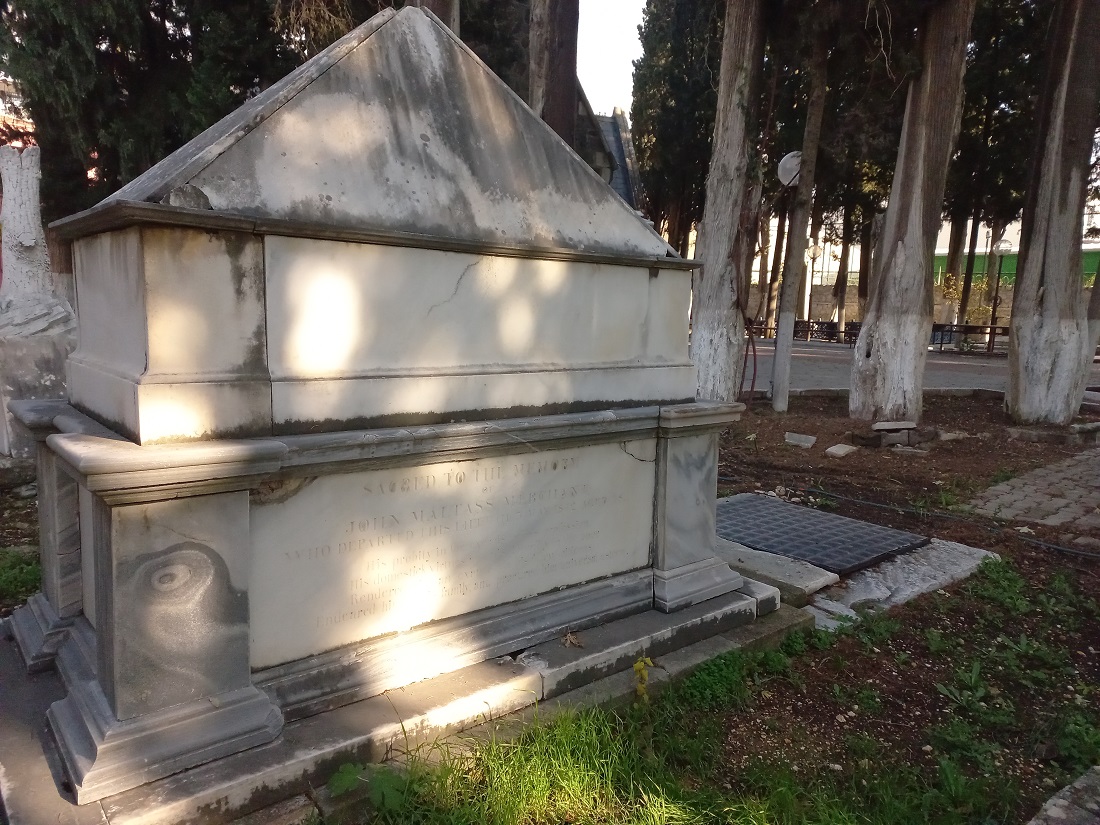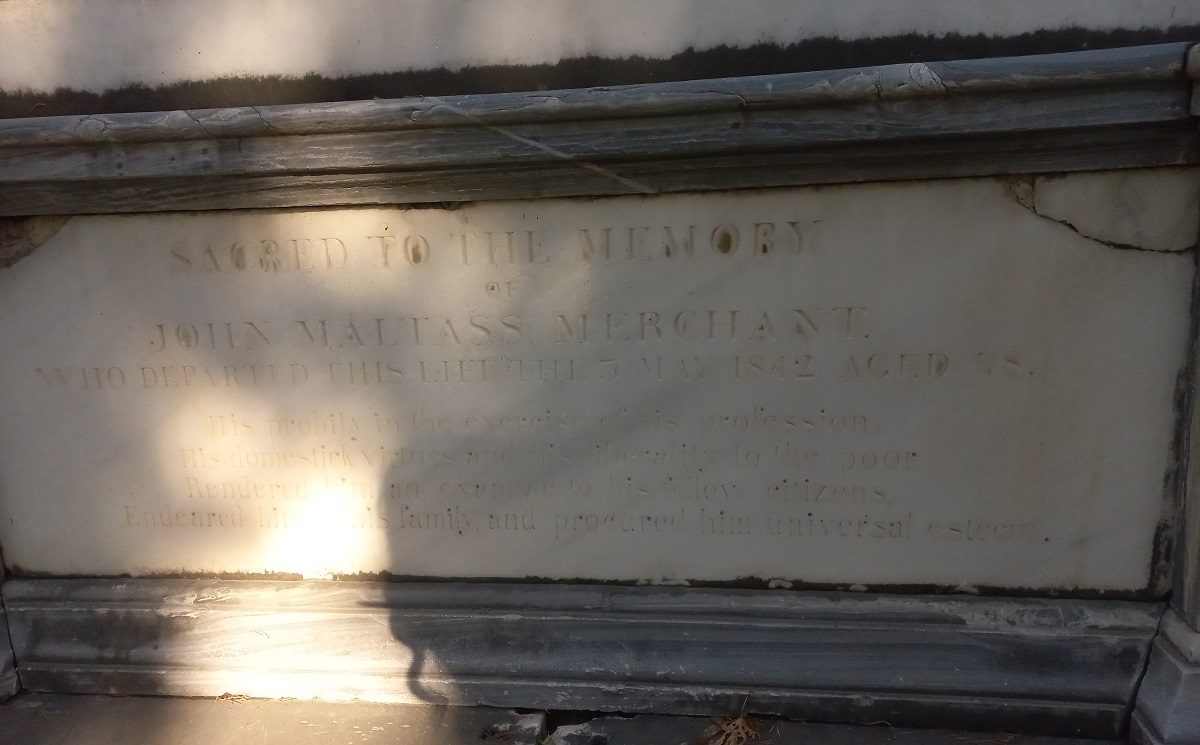
John Maltass,
He built what we will call the
John Maltass House
as his "country" residence in
Bournabat (now Bornova),
just outside Smyrna.
He built this house after 1788,
maybe around 1790.
It survives today, beautifully restored.
He lived at Smyrna until his death.
He wit his sister Mary's marriage 1797.
Her name varies widely:
She is "Louise" at marriage and son's bapt 1806.
She is
"Frances Ann" at dau's bapt 1807.
"Frances Ann Louise" at son's bapt 1808.
"Frances Ann Louisa" at dau's bapt 1809.
Seems to have adopted "Louisa" later.
She is "Louisa Ann Frances" at children's bapts 1811 and 1813 and 1816 and 1819,
and dau's burial 1813,
and in 1843 document.
She is "Louisa Frances Ann" in husband's will 1834.
"John Maltass" witnessed the
marriage of his niece
Catherine Marguerite de Cramer
at Smyrna, 2 Sept 1811.
He wit his brother
Benjamin's mar 1812.
[1844 case]
says he visited England in 1824 and stayed there about 2 years.
However it looks like he was back in Smyrna in Sept 1825.
There are two "John Maltass" signatures (father and son) witnessing
Helen's marriage in Smyrna in Sept 1825.
His will accepted for probate is dated 10 June 1834.
The surviving copy in probate says the original was destroyed by a fire on 3 June 1837
and this is a copy.
His will says he has three houses, at Bournabat and Smyrna and Buca.
It refers to
"The Country House at Bournabat" (the John Maltass house)
and "The Town House" (maybe his father's house)
and "the Country House at Bugia" (maybe his father's house).
"John Maltass" wit the mar of his nephew
William Maltass
1836.
He wit his son's mar 1837.
There are two "John Maltass" signatures (father and son) witnessing
Eugenie's mar, May 1839.
"John Maltass" wit mar of his niece
Lydia Maltass,
Oct 1839.
Could be John junior.
[1842 case] and
[1844 case]
say he made a will
dated 22 Oct 1841.
Probate was refused for this will.
Then the 1834 will was produced and this was accepted.
Death, 1842:
John died at Smyrna, 3 May 1842, age 78 yrs.
He was bur Anglican cemetery, Buca.
Grave no.231.
Dispute of the will, 1842-1845:
His will shows he left a huge fortune.
His will was disputed.
See [Dec 1842 case].
The dispute was about his status: Was he an English subject or a Turkish subject?
The court refused to grant probate until this point was established.
If English, he could leave his money to who he liked.
If Turkish, there was a standard form of inheritance decided by Turkish law.
So, given the incredible amount of money involved, it is not surprising that family members who would benefit hugely from
him being declared a Turkish subject argued that.
See item
about the dispute in
The Bristol Mirror,
6 Apr 1844. p.2.
See [July 1844 case].
The judge says the 1841 will was "not properly executed".
He finds the 1834 will valid, and grants probate.
See report
in The Times, 18 July 1844.
Will eventually proved 6 November 1845.
Louisa died 1865.
John and Louisa
had issue:



Inscription to John Maltass.
Photo 2024.
See larger
and full size.
See other shot.
Please donate to support this site.
I have spent a great deal of time and money on this research.
Research involves travel and many expenses.
Some research "things to do"
are not done for years, because I do not have the money to do them.
Please Donate Here
to support the ongoing research and
to keep this website free.